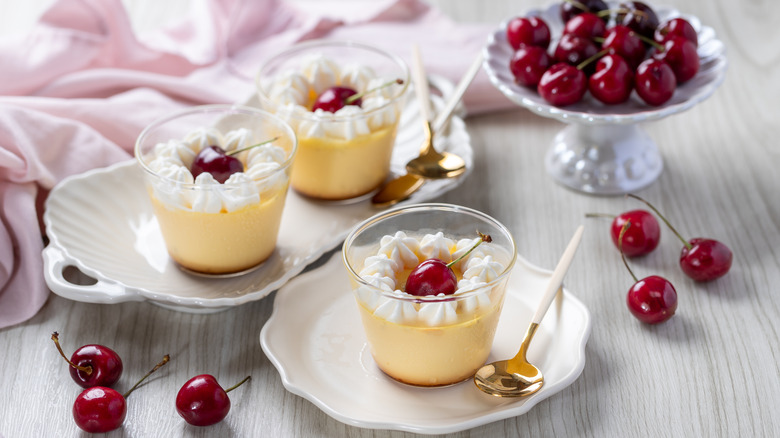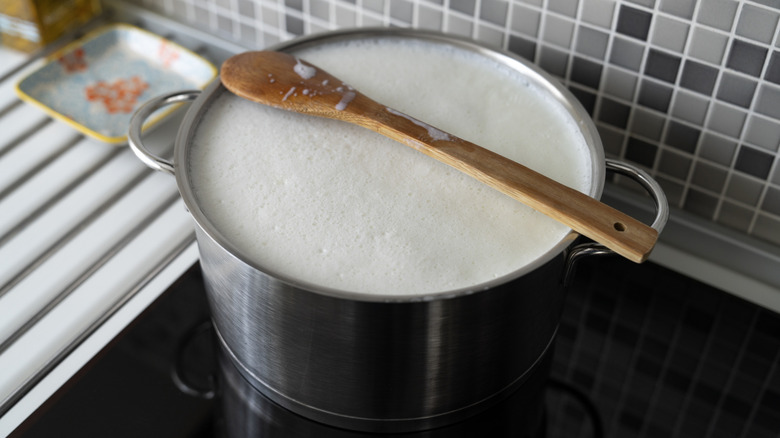Should You Be Scalding Milk When Making Desserts?
The milk we reach for every day, whether to whip up a creamy omelet or to lend feathery softness to some local iconic state desserts, comes pasteurized. The sale of raw milk, as it is, is restricted in the U.S. and illegal in Canada. Pasteurization in packaged milk knocks out harmful bacteria. So why do certain dessert recipes still call for scalding milk? To answer that, it helps to know what scalding actually does.
Scalding milk means heating it to just below its boiling point, around 180 degrees Fahrenheit, enough for tiny bubbles to gather along the edges, but not so hot that it tips into a boil. Think of it as the Goldilocks zone. This step wipes out any bacteria that survive pasteurization and neutralizes enzymes, which is why it's essential when making yogurt at home, as this helps the culture set properly.
When it comes to scalding milk to make desserts, what really matters is the protein shift that occurs. In milk-based breads, the whey gets denatured, and suddenly your bakes behave. Bagels stay chewy, cinnamon rolls stay soft, and muffins come out airy. Whey proteins can interfere with yeast activity and gluten structure, keeping dough from achieving that full, lofty rise. So, while scalding might not be mandatory for every sweet, some desserts turn out noticeably better with scalded milk. Beyond yeast doughs, a quick milk scald can give your custard pies, your puddings, and old-school ice cream recipes a creamier, deeper flavor.
The other upsides of scalding milk
Even when yeast isn't involved, scalding milk can be worth that extra effort while making desserts, especially if you want to infuse it with some of your favorite aromatics and spices. The gentle heat helps flavoring extracts like vanilla, cinnamon, or cardamom sink deeper into the milk, giving it an aroma that's both fuller and longer-lasting. This, in turn, can make your desserts, and even your coffee, taste better.
There are a few indirect benefits of scalding milk, too. In cakes, adding that warm, scalded milk to your dessert batter can gently jump-start the eggs, triggering coagulation. As the proteins heat up, they trap air and create natural leavening, which keeps the crumb fine and tender. It's a crucial step if you're trying out classic recipes like hot milk cake to put that extra gallon in your fridge to good use. But this doesn't mean you should pour it in right away. Give the scalded milk some time to cool before folding it into your batter or dough. It's one of the little milk cooking tips you should use every time you're stirring together a sweet that needs scalding.

